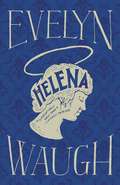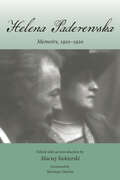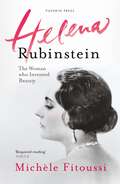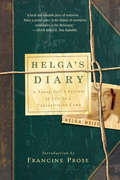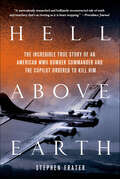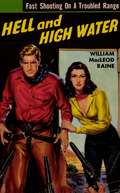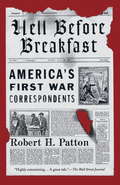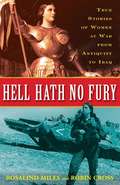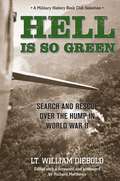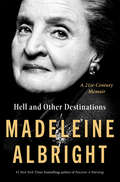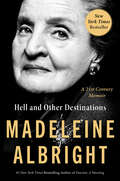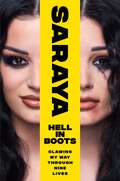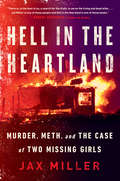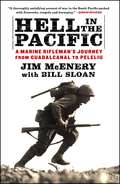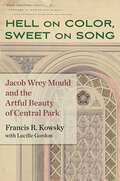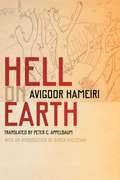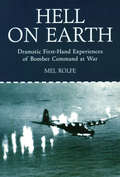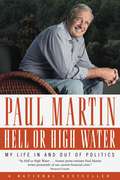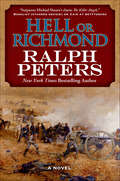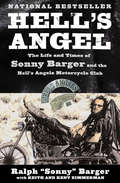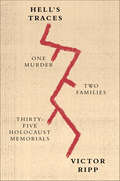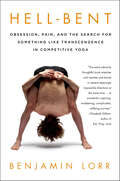- Table View
- List View
Helena
by Evelyn WaughHelena is the intelligent, horse-mad daughter of a British chieftain who is thrown into marriage with the man who will one day become the Roman emperor Constantius. Leaving home for lands unknown, she spends her adulthood seeking truth in the religions, mythologies, and philosophies of the declining ancient world, and becomes initiated into Christianity just as it is recognized as the religion of the Roman Empire. Helena-a novel that Evelyn Waugh considered to be his favorite, and most ambitious, work-deftly traverses the forces of corruption, treachery, enlightenment, and political intrigue of Imperial Rome as it brings to life an inspiring heroine.
Helena Paderewska: Memoirs, 1910–1920
by Editor Maciej SiekierskiThe celebrated pianist Ignacy Jan Paderewski was the rave of Paris, London, and New York audiences in the early twentieth century, with annual concert tours across the continents. But during World War I, Paderewski set music aside and turned to politics, becoming an eloquent spokesman for the country of his birth, Poland, then occupied by the empires of Russia, Germany, and Austria. Through his fame as a musician, Paderewski gained access to the top political leadership of France, Britain, and the United States. His devoted wife and collaborator, Helena, facilitated and accompanied virtually his every move. Her memoirs, written in English for a US audience and as a tribute to the US contribution to the Allied victory and help in the restoration of Poland, are the story of this great international adventure. In addition to being the constant companion and confidante of her famous husband, Helena was a woman with a broad range of practical interests and commitments. Her humanitarian and social work projects ranged from a care home for elderly female veterans of the struggle for independence, to care homes and feeding stations for refugee children, to her flagship endeavor, the Polish White Cross, an organization with some twenty thousand members over which she presided. She is one of the key sources on the historical events in which she participated or her husband told her about.
Helena Rubinstein: The Woman Who Invented Beauty
by Michèle FitoussiHelena Rubinstein revolutionised the beauty industry. Her mission was to teach women the importance of skincare and the empowering effect of looking your best. Rubinstein's company was the first to use science in the development of cosmetics, and with her unerring instinct for what customers wanted, she built a beauty empire that spanned the world. A legend in her own lifetime, this is her amazing story.
Helga's Diary: A Young Girl's Account of Life in a Concentration Camp
by Francine Prose Neil Bermel Helga Weiss<P>"A sacred reminder of what so many millions suffered, and only a few survived."--Adam Kirsch, New Republic <P>In 1939, Helga Weiss was a young Jewish schoolgirl in Prague. Along with some 45,000 Jews living in the city, Helga's family endured the first wave of the Nazi invasion: her father was denied work; she was forbidden from attending regular school. As Helga witnessed the increasing Nazi brutality, she began documenting her experiences in a diary. <P>In 1941, Helga and her parents were sent to the concentration camp of Terezín. There, Helga continued to write with astonishing insight about her daily life: the squalid living quarters, the cruel rationing of food, and the executions--as well as the moments of joy and hope that persisted in even the worst conditions. In 1944, Helga and her family were sent to Auschwitz. Before she left, Helga's uncle, who worked in the Terezín records department, hid her diary and drawings in a brick wall. Miraculously, he was able to reclaim them for her after the war. <P>Of the 15,000 children brought to Terezín and later deported to Auschwitz, only 100 survived. Helga was one of them. <P>Reconstructed from her original notebooks, the diary is presented here in its entirety. With an introduction by Francine Prose, a revealing interview between translator Neil Bermel and Helga, and the artwork Helga made during her time at Terezín, Helga's Diary stands as a vivid and utterly unique historical document. <P><b>A New York Times Bestseller</b>
Hell Above Earth: The Incredible True Story of an American WWII Bomber Commander and the Copilot Ordered to Kill Him
by Stephen Frater"After the twists and turns in Goering's many missions, Frater finishes with a stunning revelation . . . the author delivers an exciting read full of little-known facts about the war. A WWII thrill ride." - Kirkus Reviews The U.S. air battle over Nazi Germany in WWII was hell above earth. For bomber crews, every day they flew was like D-Day, exacting a terrible physical and emotional toll. Twenty-year-old U.S. Captain Werner Goering, accepted this, even thrived on and welcomed the adrenaline rush. He was an exceptional pilot—and the nephew of Hermann Göring, leading member of the Nazi party and commander-in-chief of the Luftwaffe. The FBI and the American military would not prevent Werner from serving his American homeland, but neither would they risk the propaganda coup that his desertion or capture would represent for Nazi Germany. J. Edgar Hoover issued a top-secret order that if Captain Goering's plane was downed for any reason over Nazi-occupied Europe, someone would be there in the cockpit to shoot Goering dead. FBI agents found a man capable of accomplishing the task in Jack Rencher, a tough, insular B-17 instructor who also happened to be one of the Army's best pistol shots. That Jack and Werner became unlikely friends is just one more twist in one of the most incredible untold tales of WWII.
Hell And High Water
by William Macleod RaineAnother barnstorming Western adventure from the prolific pen of William MacLeod Raine.Bob Lee, Youthful cowboy, on the JAB ranch in the Indian Territory before Oklahoma became a state, arouses the enmity of a territory bootlegger by pouring out his stock at a nations barn dance at Cale Station. He gets deeper into a death-threatening situation by protecting his boss' daughter, Willie May Broderick, from dancing with a bleary-eyed member of the Hickory gang, law-flouting ex-Texans who had recently come into the region. Cleburn Hightower, full-blooded Choctaw Indian and close friend of Bob Lee, further complicates the set-up.
Hell Before Breakfast: America's First War Correspondents Making History and Headlines, from the Battlefields of the Civil War to the Far Reaches of the Ottoman Empire
by Robert H. PattonThe first "war correspondent," William H. Russell of The Times of London, described himself and his profession as "the miserable parent of a luckless tribe." Others saw it differently: the war correspondent became the stuff of dreams and an urgent romantic calling. . . . Now, Robert H. Patton, acclaimed historian, author of The Pattons ("Exceptional"--The Washington Post; "Truly remarkable"--John S. Eisenhower) and Patriot Pirates ("Soul-stirring--as good as reading a Patrick O'Brian novel, except that every word is true"--Michael Korda), rediscovers and celebrates, in Hell Before Breakfast, America's first war correspondents, forgotten today but legends in their time. Here are the men who, between 1850 and 1914, and particularly during America's Civil War and the Spanish-American War, led the most romantic and thrilling of lives on the edgiest frontiers of time and space, where empires fell and dynasties flourished; they were correspondents who saw the world, broke the story, were making the news during the years when newspapers made available the most foreign of landscapes and their circulation wars were revolutionizing contemporary life, shaping global events, and creating history. Patton writes of the decades of lightning progress and high adventure, when America was emerging as a great power and the monarchies of Europe battled for dominance through a series of brief, bloody imperial wars; when the newly discovered electric telegraph enabled these extraordinary first-person dispatches to be splashed across the daily newspapers then proliferating on both sides of the Atlantic. Through the eyes (and minds) of American adventurers, soldiers, and artists-turned-correspondents--Mark Twain and the painter John Millet among them--we see what they saw and what they brought to life: the Civil War, the Austro-Prussian War, the Franco-Prussian War, the Russo-Turkish War. Patton writes about New York Herald reporter Henry Stanley, who led a caravan from the Tanzanian coast into the uncharted "cannibal country" and, after a 236-day trek, discovered the long lost and presumed dead Dr. David Livingstone . . . about Archibald Forbes of the London Daily News bringing to life in his dispatches the frantic assembly of barricades along Paris streets as royalists and Communists fought with bayonets following the Prussian invasion. Here are the fearless young correspondents, among them Henry Villard of Bavaria, a journalist who covered the Civil War and ended up a financial titan, head of the Northern Pacific Railway and an early investor in the company that would ultimately become General Electric; and George Smalley, chief war correspondent of the New York Tribune, who watched for twenty-four hours as the Union Army of the Potomac and the Confederate Army of Northern Virginia fought in the cornfields and woodlands around Antietam Creek. These correspondents were at center stage and, through their on-the-spot reporting, became legends in their time. Their intrepid spirit and sense of adventure inspired generations of storytellers, explorers, artists, writers, statesmen and politicians, and even moviemakers--from Rudyard Kipling and Winston Churchill to Theodore Roosevelt, D. W. Griffith, and Cecil B. DeMille--men whose adolescence was shaped during this spectacular age of war correspondence.From the Hardcover edition.
Hell Hath No Fury: True Stories of Women at War from Antiquity to Iraq
by Rosalind Miles Robin CrossAn engaging collection that uncovers injustices in history and overturns misconceptions about the role of women in war. When you think of war, you think of men, right? Not so fast. In Hell Hath No Fury, Rosalind Miles and Robin Cross prove that although many of their stories have been erased or forgotten, women have played an integral role in wars throughout history. In witty and compelling biographical essays categorized and alphabetized for easy reference, Miles and Cross introduce us to war leaders ...
Hell Is So Green: Search and Rescue over the Hump in World War II
by William DieboldLt. William Diebold served in the Army&’s Air Transport Command in the China-Burma-India theater of World War II and never fired a weapon in battle. Like many men who flew the Hump, he never saw on-the-ground combat, but he fought bravely by saving lives. Flyers who crossed the eastern Himalayas to keep the allied armies in China supplied with food, fuel, and weapons against Japan—preventing it from concentrating its power in the Pacific—often flew in zero-visibility, sometimes crashing into mountains or falling from the sky from Japanese Zero attacks. Those pilots who survived, Bill Diebold rescued. In Hell Is So Green, Diebold vividly describes the heat and stink of the jungle; the vermin, lice, and leeches; the towering mountains and roaring rivers. Rich with war slang, wisecracks, and old-fashioned phrases, his story reverberates with authenticity and represents the stories of many men that have never been told. After the author&’s early death, the manuscript was put away in an attic—until now. Here, from the shadows of that attic, comes a compelling story of courage under fire and heroism for the ages.
Hell and Other Destinations: A 21st-Century Memoir
by Madeleine AlbrightSix-time New York Times bestselling author and former Secretary of State Madeleine Albright—one of the world’s most admired and tireless public servants—reflects on the final stages of one’s career, and working productively into your later decades in this revealing, funny, and inspiring memoir. <P><P>In 2001, when Madeleine Albright was leaving office as America’s first female secretary of state, interviewers asked her how she wished to be remembered. “I don’t want to be remembered,” she answered. “I am still here and have much more I intend to do. As difficult as it might seem, I want every stage of my life to be more exciting than the last. <P><P>”In that time of transition, the former Secretary considered the possibilities: she could write, teach, travel, give speeches, start a business, fight for democracy, help to empower women, campaign for favored political candidates, spend more time with her grandchildren. Instead of choosing one or two, she decided to do it all. <P><P>For nearly twenty years, Albright has been in constant motion, navigating half a dozen professions, clashing with presidents and prime ministers, learning every day. Since leaving the State Department, she has blazed her own trail—and given voice to millions who yearn for respect, regardless of gender, background, or age. <P><P>Hell and Other Destinations reveals this remarkable figure at her bluntest, funniest, most intimate, and most serious. It is the tale of our times anchored in lessons for all time, narrated by an extraordinary woman with a matchless zest for life. <P><P><b>A New York Times Bestseller</b>
Hell and Other Destinations: A 21st-Century Memoir
by Madeleine Albright“Richly detailed. . . an intimate portrait of a diplomat.” —New YorkerFrom the seven-time New York Times bestselling author and former Secretary of State Madeleine Albright—among history's most admired and tireless public servants—a revealing, funny, and inspiring reflection on the challenge of continuing one’s career far beyond the normal age of retirementIn 2001, when Madeleine Albright was leaving office as America’s first female secretary of state, interviewers asked her how she wished to be remembered. “I don’t want to be remembered,” she answered. “I am still here and have much more I intend to do. As difficult as it might seem, I want every stage of my life to be more exciting than the last.”In that time of transition, the former Secretary considered the possibilities: she could write, teach, travel, give speeches, start a business, fight for democracy, help to empower women, campaign for favored political candidates, spend more time with her grandchildren. Instead of choosing one or two, she decided to do it all. For nearly twenty years, Albright was in constant motion, navigating half a dozen professions, clashing with presidents and prime ministers, learning every day. After leaving the State Department, she blazed her own trail—and gave voice to millions who yearned for respect, regardless of gender, background, or age.Hell and Other Destinations reveals this remarkable figure at her bluntest, funniest, most intimate, and most serious. It is the tale of our times anchored in lessons for all time, narrated by an extraordinary woman who had a matchless zest for life.
Hell in Boots: Clawing My Way Through Nine Lives
by Saraya-Jade BevisAn eye-opening memoir of family drama, stardom, despair, and resilience from the wildly popular wrestling superstar. Saraya-Jade Bevis, formerly WWE&’s Paige, is one of the biggest names in the wrestling world. She is the youngest two-time WWE Divas Champion and was inaugural NXT&’s Women Champion. She ranked first in Pro Wrestling Illustrated&’s Female 50 and was named Diva of the Year by Rolling Stone in 2014. She was also the subject of the critically and commercially successful 2019 film Fighting with My Family, produced by Dwayne &“The Rock&” Johnson and starring Florence Pugh. But before ascending to wrestling superstardom, she was just Saraya. Hell in Boots is Saraya&’s real, uncensored, story. From her early days in her famous (and chaotic) wrestling family, to leaving home at fifteen, to forging her own path in professional wrestling, Saraya has been through hell and back. As she fought to make it in the incredibly competitive—and at times sexist—wrestling world, she faced incredible highs and devastating lows. Saraya recounts years of struggling with substance abuse, clawing back her pride after an ex&’s sex tape leaked, adjusting to stardom in the WWE, healing from a nearly career-ending injury, a making triumphant return to wrestling as AEW Women&’s World Champion. Through it all, Saraya tells her whole truth in a way she never has before.
Hell in the Heartland: Murder, Meth, and the Case of Two Missing Girls
by Jax Miller&“There is, in the best of us, a search for the truth, to serve the living and dead alike...Jax Miller is one of those people and Hell in the Heartland is one of those books.&”—Robert Graysmith, New York Times bestselling author of ZodiacAs seen in HuffPost • OK! Magazine • CrimeReads • LitHub's "Best New Summer Books"S-Town meets I'll Be Gone in the Dark in this stranger-than-fiction cold case from rural Oklahoma that has stumped authorities for two decades, concerning the disappearance of two teenage girls and the much larger mystery of murder, possible police cover-up, and an unimaginable truth...On December 30, 1999, in rural Oklahoma, sixteen-year-old Ashley Freeman and her best friend, Lauria Bible, were having a sleepover. The next morning, the Freeman family trailer was in flames and both girls were missing.While rumors of drug debts, revenge, and police corruption abounded in the years that followed, the case remained unsolved and the girls were never found.In 2015, crime writer Jax Miller--who had been haunted by the case--decided to travel to Oklahoma to find out what really happened on that winter night in 1999, and why the story was still simmering more than fifteen years later. What she found was more than she could have ever bargained for: evidence of jaw-dropping levels of police negligence, entire communities ravaged by methamphetamine addiction, and a series of interconnected murders with an ominously familiar pattern.These forgotten towns were wild, lawless, and home to some very dark secrets.
Hell in the Pacific
by Bill Sloan Jim MceneryIn what may be the last memoir to be published by a living veteran of the pivotal invasion of Guadalcanal, which occurred almost seventy years ago, Marine Jim McEnery has teamed up with author Bill Sloan to create an unforgettable chronicle of heroism and horror. McENERY'S RIFLE COMPANY--the legendary K/3/5 of the First Marine Division, made famous by the HBO miniseries The Pacific--fought in some of the most ferocious battles of the war. In searing detail, the author takes us back to Guadalcanal, where American forces first turned the tide against the Japanese; Cape Gloucester, where 1,300 Marines were killed or wounded; and bloody Peleliu, where McEnery assumed command of the company and helped hasten the final defeat of the Japanese garrison after weeks of torturous cave-to-cave fighting. McEnery's story is a no-holds-barred, grunt's-eye view of the sacrifices, suffering, and raw courage of the men in the foxholes, locked in mortal combat with an implacable enemy sworn to fight to the death. From bayonet charges and hand-to-hand combat to midnight banzai attacks and the loss of close buddies, the rifle squad leader spares no details, chronicling his odyssey from boot camp through twenty-eight months of hellish combat until his eventual return home. He has given us an unforgettable portrait of men at war.
Hell on Color, Sweet on Song: Jacob Wrey Mould and the Artful Beauty of Central Park
by Francis R. KowskyWINNER, VICTORIAN SOCIETY IN AMERICA BOOK AWARDWINNER, 2024 PUBLICATION PRIZE, FRIENDS OF THE UPPER EAST SIDE HISTORIC DISTRICTSReveals new and previously unknown biographical material about an important figure in nineteenth-century American architecture and music.Jacob Wrey Mould is not a name that readily comes to mind when we think of New York City architecture. Yet he was one-third of the party responsible for the early development of the city’s Central Park. To this day, his sculptural reliefs, tile work, and structures in the Park enthrall visitors. Mould introduced High Victorian architecture to NYC, his fingerprint most pronounced in his striking and colorful ornamental designs and beautiful embellishments found in the carved decorations and mosaics at the Bethesda Terrace. Resurfacing the forgotten contributions of Mould, Hell on Color, Sweet on Song presents a study of this nineteenth-century American architect and musical genius.Jacob Wrey Mould, whose personal history included a tie to Africa, was born in London in 1825 and trained there as an architect before moving to New York in 1852. The following year, he received the commission to design All Souls Unitarian Church. Nicknamed “the Church of the Holy Zebra,” it was the first building in America to display the mix of colorful materials and medieval Italian inspiration that was characteristic of High Victorian Gothic architecture. In addition to being an architect and designer, Mould was an accomplished musician and prolific translator of opera librettos. Yet anxiety over money and resentment over lack of appreciation of his talents soured Mould’s spirit. Unsystematic, impractical, and immune from maturity, he displayed a singular indifference to the realities of architecture as a commercial enterprise. Despite his personal shortcomings, he influenced the design of some of NYC’s revered landmarks, including Sheepfold, the Metropolitan Museum of Art, the American Museum of Natural History, the City Hall Park fountain, and the Morningside Park promenade. From 1875 to 1879, he worked for Henry Meiggs, the “Yankee Pizarro,” in Lima, Peru.Resting on the foundation of Central Park docent Lucille Gordon’s heroic efforts to raise from obscurity one of the geniuses of American architecture and a significant contributor to the world of music in his time, Hell on Color, Sweet on Song sheds new light on a forgotten genius of American architecture and music.Funding for this book was provided by: Furthermore: a program of the J. M. Kaplan Fund
Hell on Earth
by Avigdor Hameiri Peter C. Appelbaum Avner HoltzmanHell on Earth is the second book written by Avigdor Hameiri (born Feuerstein; 1890–1970) about his experiences as a Russian prisoner of war during the second half of World War I. Translator Peter C. Appelbaum first became interested in Hameiri’s story after learning that one quarter of the Austro-Hungarian army was captured and imprisoned, and that the horrific events that took place at this time throughout Russia and central Asia are rarely discussed in scholarly texts. Available for the first time to an English-speaking audience, this reality-driven novel is comparable to classics like All Quiet on the Western Front and The Gulag Archipelago. The text is deeply tragic, while allowing some humor to shine through in the darkest hour. The reader is introduced to a procession of complex characters with whom Hamieri comes into contact during his imprisonment. The narrator watches his friends die one by one until he is released in 1917 with the help of Russian Zionist colleagues. He then immigrates to Israel in 1921. Hameiri’s perspective on the things surrounding him—the Austro-Hungarian Army, the Russian people and countryside, the geography of Siberia, the nascent Zionist movement, the Russian Revolution and its immediate aftermath—offers a distinct personal view of a moment in time that is often overshadowed by the horrors of the Holocaust. In his preface, Appelbaum argues that World War I was the original sin of the twentieth century—without it, the unthinkable acts of World War II would not have come to fruition. With an introduction by Avner Holtzman, Hell on Earth is a fascinating, albeit gruesome, account of life in prison camps at the end of the First World War. Fans of historical fiction and war memoirs will appreciate the historic value in this piece of literature.
Hell on Earth: Dramatic First Hand-Experiences of Bomber Command at War
by Mel RolfeTwenty true stories of bravery, survival, and good and bad luck involving Bomber Command during World War II from the author of Flying into Hell. In their own words, the heroes of Bomber Command tell their harrowing stories . . . &“It is believed that when Dacey realized the aircraft was on fire he grabbed an extinguisher, hurried aft and tried, in vain, to put out the flames. Somehow he became trapped behind the spreading inferno and was unable to return to the cockpit for his parachute. Alone with his screams, he could do nothing except wait and die as his unsuspecting companions jumped into the cold night. It is likely that Dacey was already dead before the Halifax plunged into the ground and blew up, atomizing his body.&” &“We were marched to a deserted and tatty industrial area, into a short cu-de-sac, where most of the property was badly damaged. A factory wall stood across the bottom and they put us against it. A line of a dozen (German) soldiers stood pavement to pavement, rifles against their shoulders. A corporal stood near them with his hand up. Stan said to me in a low, horrified voice: &‘They&’re going to shoot us.&’&” &“We could see the (Lancaster) wing flapping up and down. It could have broken off at any time and going through my mind was the thought that it probably would. But we pressed on. I took a realistic view. I knew the chances were against us getting back and this might be the time everything was going to end. But I didn&’t experience fear which interfered with what I had to do.&”
Hell or High Water: My Life in and out of Politics
by Paul MartinNational bestsellerPaul Martin was the Prime Minister we never really knew -- in this memoir he emerges as a fascinating flesh and blood man, still working hard to make a better world."The next thing you know, I was in a jail cell." (Chapter 2) "From the moment I flipped his truck on the road home to Morinville..." (Chapter 3)"When I came back into Aquin's headquarters I had a broken nose." (Chapter 4)These are not lines that you expect in a prime ministerial memoir. But Paul Martin -- who led the country from 2003 to 2006 -- is full of surprises, and his book will reveal a very different man from the prime minister who had such a rough ride in the wake of the sponsorship scandal.Although he grew up in Windsor and Ottawa as the son of the legendary Cabinet Minister Paul Martin, politics was not in his blood. As a kid he loved sports, and had summer jobs as a deckhand or a roustabout. As a young man he plunged into family life, and into the business world. After his years as a "corporate firefighter" for Power Corporation came the excitement of acquiring Canada Steamship Lines in Canada's largest ever leveraged buy-out, "the most audacious gamble of my life." In 1988, however, he became a Liberal M.P., ran for the leadership in 1990 and in 1993 became Jean Chrétien's minister of finance, with the country in a deep hole. The story of his years as perhaps our best finance minister ever leads to his account of the revolt against Chrétien, and his time in office.Great events and world figures stud this book, which is firm but polite as it sets the record straight, and is full of wry humour and self-deprecating stories. Far from ending with his defeat in 2006, the book deals with his continuing passions, such as Canada's aboriginals and the problems of Africa. This is an idealistic, interesting book that reveals the Paul Martin we never knew. It's a pleasure to meet him.From the Hardcover edition.
Hell or Richmond: A Novel (The Battle Hymn Cycle #2)
by Ralph PetersThe New York Times–bestselling author of Cain at Gettysburg recreates the US Civil War and Grant’s Overland Campaign in this gripping historical novel.Winner of the American Library Association’s 2014 Boyd Award for Literary Excellence in Military FictionBetween May 5 and June 3, 1864, the Union and Confederate armies suffered 88,000 casualties. Twenty-nine thousand were killed, wounded, or captured in the first two days of combat. The savagery shocked a young, divided nation.Against this backdrop of the birth of modern warfare and the painful rebirth of the United States, New York Times–bestselling novelist Ralph Peters has created a breathtaking narrative that surpasses the drama and intensity of his recent critically acclaimed novel, Cain at Gettysburg.In Hell or Richmond, thirty days of ceaseless carnage are seen through the eyes of a compelling cast, from the Union’s Harvard-valedictorian “boy general,” Francis Channing Barlow, to the brawling “dirty boots” Rebel colonel, William C. Oates. From Ulysses S. Grant and Robert E. Lee to a simple laborer destined to win the Medal of Honor, Peters brings to life an enthralling array of leaders and simple soldiers from both North and South, fleshing out history with stunning, knowledgeable realism.“Ralph Peters takes the writing of historical novels to a new level of truthfulness, authenticity, and realism. . . . Filled with leadership lessons that are powerful and timeless. Peters is a master storyteller.” —Armchair General
Hell to Pay: The Unfolding Story of Hillary Rodham Clinton
by Barbara OlsonHell to Pay: The Unfolding Story of Hillary Rodham Clinton By Barbara Olson
Hell's Angel
by Sonny BargerDue to copyright restrictions, this eBook may not contain all of the images available in the print edition.Narrated by the visionary founding member, Hell's Angel provides a fascinating all-access pass to the secret world of the notorious Hell's Angels Motorcycle Club. Sonny Barger recounts the birth of the original Oakland Hell's Angels and the four turbulent decades that followed. Hell's Angel also chronicles the way the HAMC revolutionized the look of the Harley-Davidson motorcycle and built what has become a worldwide bike-riding fraternity, a beacon for freedom-seekers the world over.Dozens of photos, including many from private collections and from noted photographers, provide visual documentation to this extraordinary tale. Never simply a story about motorcycles, colorful characters, and high-speed thrills, Hell's Angel is the ultimate outlaw's tale of loyalty and betrayal, subcultures and brotherhood, and the real price of freedom.
Hell's Angel: The Autobiography of Sonny Barger
by Sonny BargerSonny Barger recounts the birth of the original Oakland Hell's Angels and the four turbulent decades that followed. Hell's Angel also chronicles the way the HAMC revolutionized the look of the Harley-Davidson motorcycle and built what has become a worldwide bike-riding fraternity, a beacon for freedom-seekers the world over. Dozens of photos, including many from private collections and from noted photographers, provide visual documentation to this extraordinary tale. Never simply a story about motorcycles, colorful characters, and high-speed thrills, Hell's Angel is the ultimate outlaw's tale of loyalty and betrayal, subcultures and brotherhood, and the real price of freedom. Due to copyright restrictions, this eBook may not contain all of the images available in the print edition.
Hell's Traces: One Murder, Two Families, Thirty-Five Holocaust Memorials
by Victor RippIn July 1942, the French police in Paris, acting for the German military government, arrested Victor Ripp’s three-year-old cousin, Alexandre. Two months later, the boy was killed in Auschwitz. In Hell’s Traces, Ripp examines this act through the prism of family history. In addition to Alexandre, ten members of Ripp’s family on his father’s side died in the Holocaust. His mother’s side of the family, numbering thirty people, was in Berlin when Hitler came to power. Without exception they escaped the Final Solution. Hell’s Traces tells the story of the two families’ divergent paths. To spark the past to life, he embarks on a journey to visit Holocaust memorials throughout Europe. “Could a stone pillar or a bronze plaque or whatever else constitutes a memorial,” he asks, “cause events that took place more than seven decades ago to appear vivid?”A memorial in Warsaw that includes a boxcar like the ones that carried Jews to Auschwitz compels Ripp to contemplate the horror of Alexandre’s transport to his death. One in Berlin that invokes the anti-Jewish laws of the 1930s allows him to better understand how his mother’s family escaped the Nazis. In Paris he stumbles across a playground dedicated to the memory of the French children who were deported, Alexandre among them. Ultimately, Ripp sees thirty-five memorials in six countries. He encounters the artists who designed the memorials, historians who recall the events that are memorialized, and survivors with their own stories to tell.Resolutely unsentimental, Hell’s Traces is structured like a travelogue in which each destination enables a reckoning with the past.
Hell-Bent: Obsession, Pain, and the Search for Something Like Transcendence in Competitive Yoga
by Benjamin LorrAuthor Benjamin Lorr wandered into a yoga studio—and fell down a rabbit holeHell-Bent explores a fascinating, often surreal world at the extremes of American yoga. Benjamin Lorr walked into his first yoga studio on a whim, overweight and curious, and quickly found the yoga reinventing his life. He was studying Bikram Yoga (or "hot yoga") when a run-in with a master and competitive yoga champion led him into an obsessive subculture—a group of yogis for whom eight hours of practice a day in 110- degree heat was just the beginning.So begins a journey. Populated by athletic prodigies, wide-eyed celebrities, legitimate medical miracles, and predatory hucksters, it's a nation-spanning trip—from the jam-packed studios of New York to the athletic performance labs of the University of Oregon to the stage at the National Yoga Asana Championship, where Lorr competes for glory. The culmination of two years of research, and featuring hundreds of interviews with yogis, scientists, doctors, and scholars, Hell-Bent is a wild exploration. A look at the science behind a controversial practice, a story of greed, narcissism, and corruption, and a mind-bending tale of personal transformation, it is a book that will not only challenge your conception of yoga, but will change the way you view the fragile, inspirational limits of the human body itself.
